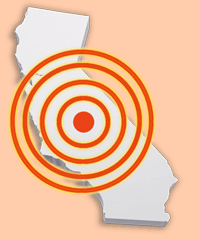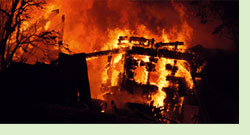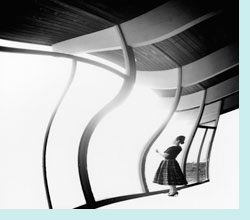Shake, Rattle...and Retrofit - Page 4
The purpose of bolting and bracing is to help homeowners reduce financial loss, make a faster recovery from a disaster situation, and most importantly, protect the safety of the family. Retrofitting will reduce the cost of repair when an earthquake hits, and may even prevent structural damage altogether.
Doing these improvements will help reduce the amount of time and effort needed for recovery, returning your family quickly back to its normal lifestyle.
California's next quake:
when is the big question

Twenty-five years have passed since the Loma Prieta earthquake rocked Northern California. At 6.9 (Richter scale) in magnitude, that 1989 tremor left 63 people dead and 3,000 to 12,000 homeless.
Large seismic occurrences continue to be dangerous and deadly. The 1994 Northridge earthquake (6.7) killed 72 and caused $20 billion in damage.
It's not a question of if, but a question of when the next big earthquake will hit California. According to forecasts by the Southern California Earthquake Center, the state has a 99.7 percent chance of facing a magnitude 6.7 or larger earthquake in the next 30 years.
For all of California, the southern San Andreas fault—which passes through the Bay Area from San Francisco to points east of San Diego—has the highest probability of generating at least one magnitude 6.7 quake or larger is (59 percent in the next 30 years).
In Northern California, the most likely source of such earthquakes is the Hayward-Rodgers Creek Fault (31 percent in the next 30 years), which runs through the East Bay to San Jose.
In SoCal, the Bay Jacinto Fault runs 130 miles through San Bernardino, Riverside, San Diego, and Imperial Counties. It is considered the most seismically active fault area in Southern California. The Elsinore Fault, which is part of the San Andreas fault system, is one of the largest faults in the southern area of the state but also the most quiet. The Imperial Fault, located on U.S.-Mexico border, has been the location of earthquakes in 1979, 1940, 1915, and 1892. The earliest one of the four reached 7.8 on the Richter magnitude scale.
The next question is: are you ready?
Fire: a disastrous
quake side effect

Fires are an unfortunate side effect of earthquakes, and ruptured gas lines can cause huge explosions.
The more than two-dozen fires, caused by ruptured gas mains that resulted from the famous 1906 earthquake in San Francisco, represented an estimated 90 percent of the city's destruction. More recently, in the 2010 natural gas explosion that destroyed the neighborhood of Crestmoor in San Bruno, fire took eight lives and three-dozen homes.
Coincidentally, a month prior to the San Bruno disaster, fire officials in Palo Alto offered a warning to people who own older homes, especially houses with natural gas lines running underneath their foundations, as many MCM homes do. "If you smell gas, take it very seriously," said Palo Alto's Fire Marshall Gordon Simpkinson.
In the 1950s, builders were commonly routing the gas lines in galvanized piped underneath the slab foundations of homes, but it's something that was discontinued when pipe erosion was discovered in the surrounding soil.
Often, the problem is solved at remodeling, as homeowners abandon their original gas lines and install new ones elsewhere in the house. The originals are disconnected, capped off, and re-routed through garages, walls, and outdoors.
If you smell gas occasionally, your utilities department will come out with special detection equipment and inspect your home, room by room. In Palo Alto, where there are nearly 3,000 Eichler homes, it's a free service that City of Palo Alto Utilities offers its homeowners. If the smell of gas is strong, however, call 911 and the fire department will spring into action.
Shaken in a
storm of glass
If not for the five o'clock telephone call on that October afternoon in 1989, Eichler owner Hermine Horoupian might have experienced the wrath of Loma Prieta face to face.
Instead, the phone call served as a lifesaving alert and, like a lucky star caught by the hand of fate, Horoupian weathered a storm of glass to share her frightening tale of exploding windows and flying shards.
For most of the day, the setting was a typical one at the Horoupian household, a Jones & Emmons perched on a hilltop circle on Stanford campus. Horoupian, a New Jersey transplant who had been living in her Eichler for four years, and her mother-in-law were enjoying the afternoon together, when a friend living a few miles away, in Los Altos, called her on the phone.





